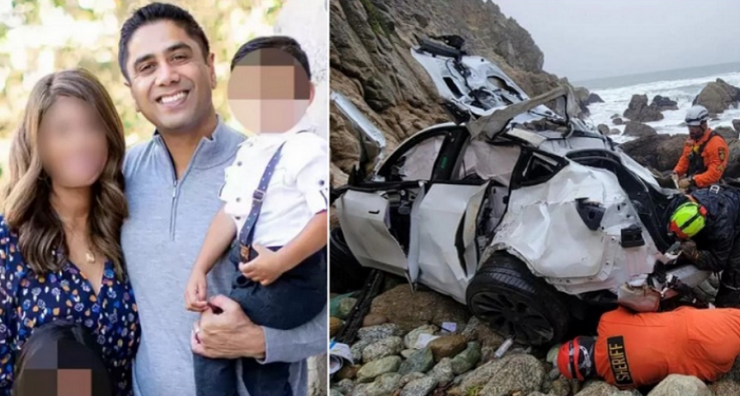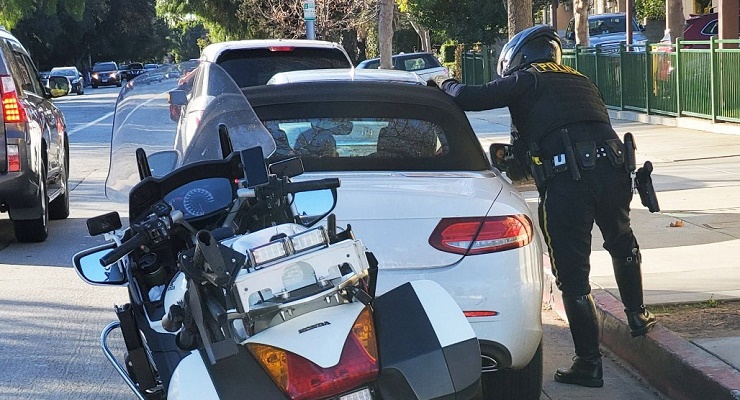
At Thursday’s Civilian Oversight Commission meeting Independent Police Auditor Brian Maxey is scheduled to make a presentation on previous independent reviews of past officer-involved shootings.
The presentation was still being completed on Wednesday morning.
According to police policy, following an officer-involved shooting (known as an OIS), an in-custody death, and other critical incidents, Pasadena detectives and the L.A. County District Attorney’s Office conduct separate criminal investigations.
The D.A.’s response team rolls out at the same time as local detectives after the shooting occurs.
The D.A. produces a finding based on both the police investigation and their investigation to determine if the officers acted within the framework of the law.
If it is concluded the officers acted outside that framework, prosecutors next decide if criminal charges should be filed against the involved officers.
The city has used Mike Genacco’s Office of Independent Review to conduct investigations dating back to the officer involved shooting of Leroy Barnes in 2009. The OIR was used again to investigate police procedure in the Kendrec McDade shooting.
However, after that incident, local activists demanded the department use the Los Angeles County Sheriff’s Department to conduct independent investigations of critical incidents.
LASD handling of the investigation into the fatal incident involving Pasadena police officers and JR Thomas made it difficult to get information or updates.
Almost immediately after the incident, the LASD moved press conferences to Los Angeles on a Saturday morning with no notification making it hard for locals to get information.
Pasadena Police Chief John Perez ended the LASD involvement with local critical incidents after he became police chief.
The group is currently investigating the officer-involved shooting death of 32-year-old Anthony McClain.
“The majority of the recommendations by the OIR were implemented,” Perez told Pasadena Now. “Some were so in the weeds — like ‘put your car in park’ — that they took care of themselves.”
According to Perez some of the recommendations were policy corrections, others were protocols that come out of training.
“We’re talking about a lot of different platforms.”
According to Lt. Bill Grisafe some of the recommendations that were adopted were later replaced by technology like body worn cameras which are now used during witness interviews, instead of the form recommended by the OIR.
Although three years apart, the Barnes and McDade incidents had tremendous impact on the city.
Police shot Barnes 11 times on Feb. 19 during a traffic stop on Mentone Avenue near Washington Boulevard, following a struggle in the backseat of the Toyota Camry he was riding in.
Barnes entered the vehicle after police spotted several young men crowded around the car, talking to driver Amika Edwards, who was parked on the wrong side of Pepper Street.
After police pulled over the vehicle, Barnes refused to remove his hand from his backpack. Barnes exited the vehicle during the scuffle according to police and brandished a gun from the backpack and pointed it at them. The gun was recovered at the scene when coroners removed his body.
The incident left local residents calling for civilian oversight of the department. Those calls returned three years later, when police shot and killed McDade.
The 38-page report of the Barnes incident was critical of some of the procedures used by the police officers during the incident.
“When the officers approached the car together, their procedure was not clear, consistent, or focused. The backseat passenger’s ducking down movement raised their apprehensions, but they chose not to treat the incident as a ‘felony stop,’ in which occupants are ordered to exit the vehicle at gunpoint,” the report states.
The report also stated, the officers did not order the occupants out of the car or call for backup and were inconsistent in their approach as one officer approached with his gun drawn and the other officer’s gun was holstered.
As that was happening the driver was still at the wheel with the engine running and “almost no attention was directed to the driver of the vehicle,” according to the report.
“When the officers reached in and attempted to take hold of Barnes, they placed themselves in a very vulnerable position should the car have begun to move forward rapidly, exposing each of them to the distinct likelihood that they could be dragged or run over by the speeding car. … The distinct likelihood that the vehicle was going to lurch forward combined with an uncooperative passenger possibly secreting a weapon created very significant officer-safety issues for both involved PPD personnel. As a result of the officers’ tactics, if the driver had chosen to speed away as they found themselves halfway in the car, off balance, at a position of disadvantage, and engaged in a physical struggle with a soon-to-be-armed suspect, the possible consequences to the officers could have been extremely dire.”
McDade was shot and killed on March 24, 2012, after a brief pursuit. Police officers said they believed McDade was armed after a man falsely claimed during a 911 call that he was robbed at gunpoint by two African-American men.
After the shooting, then-City Manager Michael Beck and Pasadena Police Chief Phillip Sanchez asked the OIR to investigate the police officers adherence to policy during the shooting. However, after the report was completed, the Pasadena Police Officers Association (PPOA) fought to keep the report sealed under claims that the report was a personnel document which contained confidential information about the officers.
The city originally stood with the PPOA and then switched sides after a lawsuit was filed and demanded the document be released.
After Los Angeles Superior Court Judge James Chalfant ruled that a redacted version of the report could be released, the PPOA received a stay from the US Ninth Circuit Court of Appeals. An appeals document filed by the PPOA containing details of the officers’ actions was accidentally released and later sealed, but not before several media outlets, including Pasadena Now, acquired copies. The report was eventually released.
The McDade incident led to greater transparency in the department, including the use of body worn cameras.
Here are the recommendations made by the OIR in both cases.
Leroy Barnes:
The OIR recommended 14 policy changes after investigating the officers’ actions in the Leroy Barnes’ case including:
- Training personnel be part of the rollout team after a shooting.
- Further training of investigators assigned who conduct interviews of personnel in officer-involved shooting so that they are aware of the deleterious consequences of leading questions in these investigations.
- Formalizing protocols for promoting the cooperation of witnesses while acknowledging their rights under the prevailing circumstances.
- Modification of officer-involved shooting investigative protocols so that interviewers routinely use diagrams to obtain a permanent account of the sequential positioning of involved personnel and civilians.
- Focus their interviews on learning the involved officers’ observations, positioning, actions, decision making and state of mind using basic open-ended and fact neutral who, what, when, where, how and why questions.
- Development of consistent protocols on whether, prior to being interviewed, involved personnel will be shown video capturing the incident. One possible protocol for the Department to consider would be to interview the involved personnel during a walkthrough of the event, allow them to view the video, and then follow up by asking if the video caused them to refresh their recollection about the incident.
- Continue its commitment to transparency in providing timely information to the public, but redouble its efforts to ensure that such information is completely accurate before doing so.
- Internal supervisory protocols be developed to ensure that the administrative presentation to command staff initiate identification of tactical issues, that use of diagrams, trajectory of bullets, location of casings and other forensic evidence be used to assist in explaining the positioning of individuals at various times during the evidence, that the reference to “force science” issues be eliminated, and that the presenter has a mastery not only of the presentation itself but the complete investigative file so that questions raised by command staff can be adequately addressed.
- Ensure enforcement of its officer-involved shooting investigation retention policy so that such investigations are preserved at least throughout the career of each officer. In addition, the administrative review should routinely closely examine past officer-involved shootings or other relevant history of involved officers to identify any commonalities of tactical decision making and decisions to deploy deadly force.
- Training staff be involved in the identification of tactical issues to be presented by Professional Standards investigators and be part of the subsequent discussion and assessment of the tactical decision making by involved personnel.
- Each member of the executive review team be provided access to the officer-involved shooting investigative file prior to the executive review.
- A timely and robust action plan be devised in every officer-involved shooting. The plan should address issues that may have presented themselves in each of the following areas: shooting scene/rollout response, investigative issues, individual accountability (potential violations of policy), tactical issues, supervisory issues, training issues, equipment issues, and information to the public. In addition to incorporating different strategies and methods to address each issue ranging from policy.
- The Department require that a training bulletin be devised for every officer-involved shooting that addresses issues identified through the review process.
- Develop protocols that provide a mechanism to carefully assess the status and assignment of officers involved in officer-involved shootings during the pendency of the investigation.
In the Kendrec McDade incident 25 recommendations were made by the OIR.
- The OIR again recommended PPD should consider revising protocols to ensure that training personnel are part of the rollout team for officer-involved shootings.
- Revisiting the Letter of Agreement with the Pasadena Peace Officers Association requiring the Department to preview recorded evidence with officers prior to being interviewed about officer-involved shootings (as they did in the McDade case) and should strive to develop protocols that would prevent officers from previewing recorded evidence prior to their interviews.
- Avoid the use of telephonic interviews as occurred in the McDade case, PPD should develop protocols discouraging the use of telephonic interviews in officer-involved shooting investigations. When in person interviews prove to be impracticable, the investigative file should explain why.
- Despite our suggestions, witnesses were not asked questions that could have supported or contradicted involved officers’ version of events, Pasadena PD should design investigative protocols that would ensure that witnesses were questioned about observations that could do so.
- The Department should develop protocols requiring that in every use of deadly force incident, Pasadena PD should conduct an administrative investigation that, at a minimum, includes follow-up interviews of the involved officers regarding tactical decision-making and collects sufficient additional evidence so that the executive team may identify and assess performance, supervision and equipment issues based on the involved officers’ articulated mindset.
- Because the independent reviewers in the McDade shooting were not invited to attend the Department’s administrative review, should PPD engage in future independent reviews, it should reconsider inviting such reviewers to attend those reviews.
- The Department should brief the involved officers and issue a training bulletin on the tactical considerations and potential disadvantages in operating a patrol car while holding a firearm in one hand.
- Devise protocols and provide training on those protocols that would require immediate radio notification if officers who are following a suspect collide with a structure, however minor.
- Brief the involved officers in the McDade shooting and devise a training bulletin for all PPD officers advising them of the Department’s foot pursuit policy, the tactical disadvantages of splitting from a partner, the policy’s requirement that officers broadcast whether they believe the suspect is armed, and the tactical concerns in closing distance on a believed to be armed suspect
- To avoid the officer and public safety issues that arose in this case as a result of the decision to attempt to cut off Mr. McDade and box him in, PPD should circumscribe its tactical policies and create training that would prohibit a “cut off’ and “box in” maneuver when pursuing suspects believed to be armed.
- brief the involved officer and issue a roll call briefing andjor training bulletin regarding the need under stressful circumstances to remember to place your car in park before exiting the patrol car and the potential calamitous consequences if one forgets to do so.
- The City should consider whether it should allocate funding for a new mobile audio video system to be installed in PPD patrol cars.
- PPD should equip its officers with mobile audio devices.
- PPD should devise policy specifying when officers are required to activate mobile audio devices.
- Crime scene photographs should be carefully reviewed by the investigators. If there is evidence of items having been moved, inquiry should be undertaken into that movement and case notes should explain the circumstances behind the movement.
- Because in McDade the involved officers chose not to respond with lights and siren and therefore their in-car audio video system was not automatically activated and because they did not manually activate the system, the Department should devise policy requiring manual activation of the 51 in car audio video system when an officer is responding to felony calls or pursuing a person believed to be armed.
- Pasadena PD should devise protocols so that interviews of involved officers are conducted no more than a few hours after the incident.
- As was eventually done in the McDade review, a robust and detained administrative memorandum should be timely prepared that documents the discussion, issues identified, and determinations by the Review Board with regard to tactical decision-making, policy concerns, supervision, equipment, post incident response and assessment of the internal investigations.
- Pasadena PD’s critical incident administrative review process should include a documented, tailored and detailed action plan designed to target and address any issues involving tactics, supervision, training, equipment, or post-incident response or investigative issues.
- The critical incident review action plan should include as a necessary component that individual feedback is provided its involved officers and any other actions of PPD personnel regarding decisionmaking and issues identified during the internal review.
- The critical incident review action plan should include as a necessary component the creation of a training bulletin that provides insight to all PPD personnel issues and challenges identified during the internal review.
- Recommendation Twenty- Three: Once concerning officer tactical decision making is identified such as the involved officers:
(1) not successfully broadcasting their observations of McDade being armed when they were following him in the police vehicle,
(2) not communicating with each other regarding their apprehension plan,
(3) continuing to pursue the suspect aggressively, including traversing an admittedly unsafe narrow throughway,
(4) the driving officer deciding to take his gun out thus making difficult driving maneuvers with one hand,
(5) failing to reevaluate the safeness of their actions after colliding the patrol car with a building wall,
(6) failing to broadcast the traffic collision,
(7) splitting partners without effective communication resulting in unclear understandings about their next moves, (8) the passenger officer deciding to chase an armed suspect on foot with the intent to apprehend rather than the preferred and safer goal of containment,
(9) the driving officer deciding to engage in a “cut off’ and “box in” maneuver which required driving past an armed suspect, and
(10) the driving officer positioning and stopping the patrol car too close to a running suspect he believed was armed, PPD should consider whether such decisions may have combined to instill in the officers an extraordinary level of fear so that once the driving officer placed.
- In reviewing officer-involved shootings, PPD should recognize the strong correlation between officer tactical decisionmaking that is inconsistent with principles of officer and public safety and the eventual perceived need to use deadly force and use that principle, consistent with recent California Supreme Court jurisprudence, to assess and evaluate officer decision-making.
- The Department should continue to work to create a culture where officers are encouraged to use tactical proficiencies and decision-making consistent with principles of officer safety to dictate desired outcomes.
- The Department and the City should cement its commitment to transparency by authorizing release of a factual, analytical, public, and independent report that permits its public and stakeholders the ability to determine for themselves how the incident unfolded, how well the Department investigates and reviews officer-involved shootings, how well the Department holds involved personnel accountable, and how well the Department develops learning for itself and its officers in response to them.














 0 comments
0 comments


